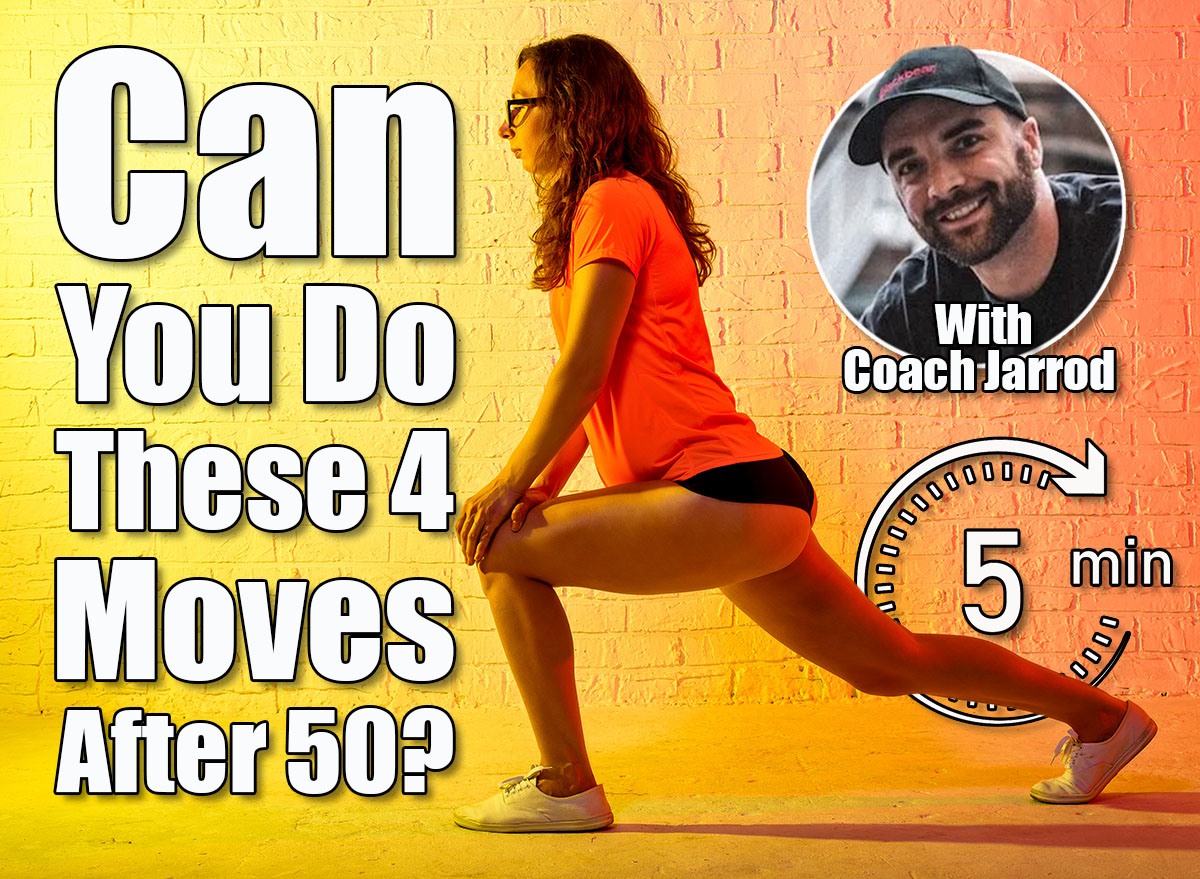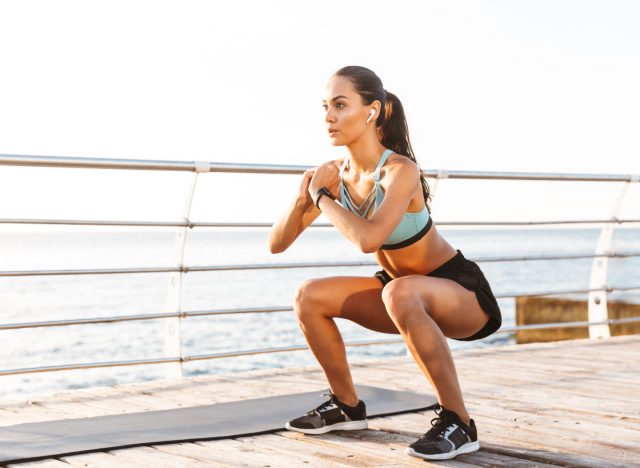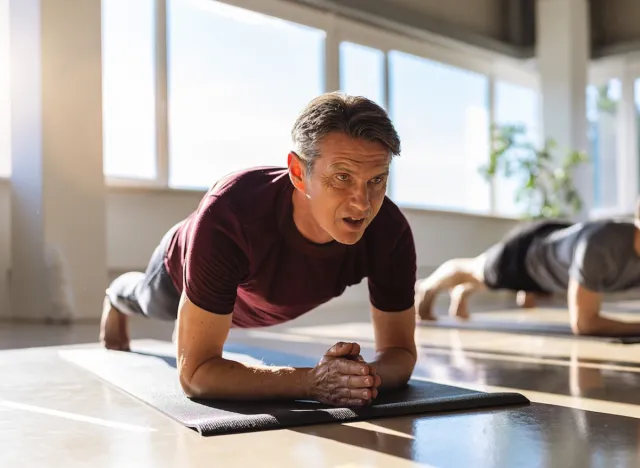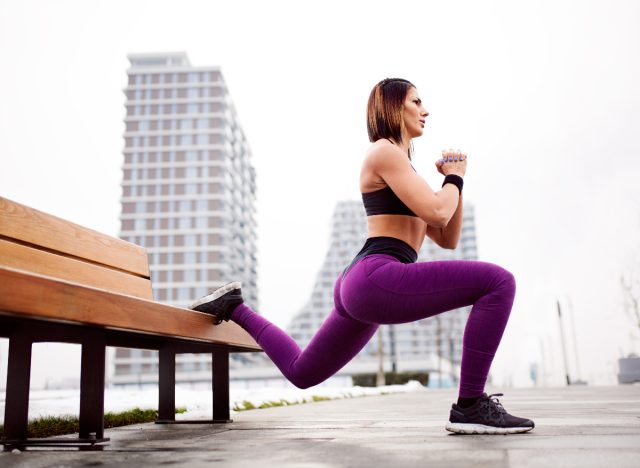If You Can Do These 4 Moves After 50, Your Strength Is Elite

Don’t let turning 50 slow you down; let it lift you up! It should mark the beginning of a smarter, more intentional approach to staying strong and capable. While many chase heavy lifts or fancy machines, a valid test of strength over 50 comes down to how well you move and how consistently you can control your own body.
That is where these four foundational moves come in. They do not just test your strength. They prove your ability to balance, stabilize, and move with control. If you can do these four exercises with solid form and confidence, you are ahead of the curve and stronger than most of your peers.
Let’s break down each move, what it says about your body, and how to do it properly.
4 Moves That Prove Your Strength Is Elite After 50
Move #1: Bodyweight Squat to Parallel (or Below)

The squat is your foundation. You use it every day, from getting out of a chair to lifting a laundry basket. A strong, controlled squat to parallel or deeper depth shows off strength in your quadriceps, gluteus maximus, and hip muscles. It also proves that your knees, ankles, and lower back are functioning correctly.
If you can lower into a squat without lifting your heels or letting your knees cave inward, your mobility and strength are right where they need to be.
Test It: Aim for 10 to 15 reps with perfect control.
How to Do It:
- Stand tall with your feet shoulder-width apart and your toes pointed slightly outward.
- Brace your core and keep your chest tall.
- Push your hips back and begin bending your knees to lower your body.
- Keep your heels flat on the floor and your back straight.
- Lower until your thighs reach parallel or slightly below.
- Press through your heels to return to the top.
- Squeeze your glutes at the top and repeat.
Move #2: Push-Up with Full Range of Motion

Push-ups go beyond chest and arms. This move challenges your core, shoulders, and even glutes when performed correctly. If you can lower your chest near the floor and push back up without your hips sagging or your elbows flaring, your upper body strength and control are in great shape.
Most people lose push-up strength over time. Maintaining this ability shows that your body is still functioning optimally.
Test It: Aim for 8 to 12 clean, controlled reps.
How to Do It:
- Start in a high plank with your hands under your shoulders and feet together.
- Keep your body in a straight line from your head to your heels.
- Engage your core and squeeze your glutes.
- Bend your elbows to lower your chest toward the ground.
- Keep your elbows close to your body and avoid shrugging your shoulders.
- Stop just before your chest touches the floor.
- Press back up to the top without letting your hips sag.
Move #3: Plank Hold for 60 Seconds

The plank may look simple, but it tests your entire body. A strong plank builds core strength, improves posture, and protects your lower back. Holding it for a full minute shows that your endurance and control are well above average.
If you can stay rock solid without letting your hips drop or your shoulders shrug, you have a strong and stable core.
Test It: Hold for 60 seconds without shifting or collapsing.
How to Do It:
- Start on your forearms with your elbows under your shoulders.
- Extend your legs straight behind you and keep your feet together.
- Squeeze your glutes and brace your core.
- Keep your body in a straight line from head to heels.
- Look slightly ahead to keep your neck in line with your spine.
- Maintain this position without moving or allowing your hips to sag.
Move #4 Split Squat for 8+ Reps Per Side

The split squat checks your balance, coordination, and single-leg strength. Lowering your back knee with control while keeping your torso tall takes a lot of muscle recruitment and focus. Most people struggle with single-leg work. If you can perform this without wobbling, you are way ahead.
This move translates to real-life stability and helps protect your knees and hips in the long term.
Test It: Aim for 8 to 10 controlled reps per leg.
How to Do It:
- Step one foot forward and the other foot back into a split stance.
- Keep your front foot flat and your heel grounded.
- Brace your core and keep your chest up.
- Bend both knees to lower your back knee toward the floor.
- Keep your front knee over your ankle and avoid leaning forward.
- Stop just before your back knee touches the ground.
- Push through your front heel to return to the top.
- Complete all reps on one side, then switch to the other leg.
Best Tips to Keep Building Strength After 50
Hitting your stride after 50 is about training with purpose, fueling your body, and moving with intent. If you want to continue mastering these foundational moves and build lean, functional strength, you need to train smarter, not harder.
Here are the most effective ways to stay strong, resilient, and energized well beyond your 50s:
- Train three to four times per week with full-body workouts.
- Prioritize recovery, rest, and sleep.
- Eat protein-rich meals to support lean muscle.
- Focus on good form rather than heavy weights.
- Walk or stay active every day to improve blood flow and joint health.